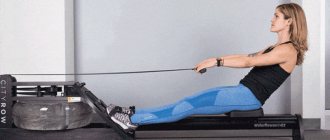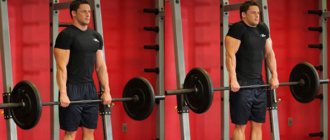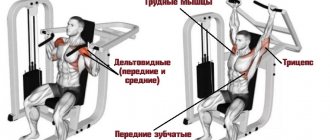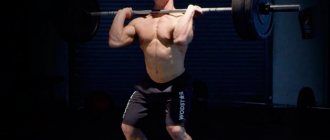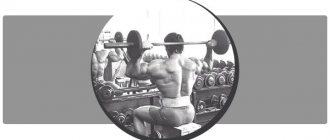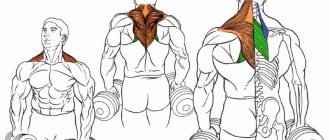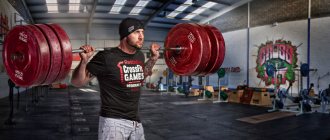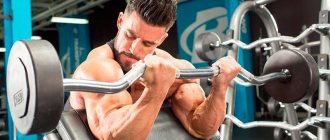A curly ribbon at rhythmic gymnastics competitions is perhaps the hallmark of this sport. This may not be the most difficult section of gymnastics, but it is definitely the most beautiful. A complex combination of plasticity, dance, even facial expressions, in coordination with music and free movements, make rhythmic gymnastics an activity that needs to be studied for many years. Coordination of movements must take into account the voluntary movements of the gymnast and control of the apparatus - a mace, ball, hoop, rope or ribbon, in which the stick and long fabric train move independently.
Accessory characteristics
The tape consists of a wooden or plastic stick 50 to 60 centimeters long. Recently, plastic has been used more often; plexiglass is often used as a material option for making wands. The color of the stick does not matter; it is selected to match the gymnast’s costume.
The ribbon is made of satin and has a length of five to six meters, depending on the age of the gymnast. Ribbons can be one color or multi-colored; the design can be chosen by the athlete at her discretion.
Another element of the tape that is invisible is the metal carabiner that connects the tape and the stick. It is needed so that the tape rotates freely. The carbine must withstand serious loads; there have been cases when this metal element broke even at international competitions.
The International Gymnastics Federation has established general rules, according to which an athlete, performing exercises with a ribbon, makes turns, rotational movements and jumps, and the ribbon moves in large and small circles, snakes, ridges, spirals, and throws and bounces are also made with a stick.
Complex design
If you try, you can make a gymnastics ribbon that will rotate freely relative to the stick. This wand is more difficult to use, but the tricks will be more beautiful.
- Take a plastic tube or the tube is made of tin.
- A plug is placed on one end, and a cap with a hole in the middle is placed on the other. The cap can be made from tin.
- A wire about eight centimeters long, bent in half, is inserted into the hole, hooks are made on one side to hold it in the cap, and a ring is made on the other. The burrs should not interfere with the free rotation of the ring.
- At the edge of the tape you need to make a tube into which a rope 14 centimeters long is inserted. The edges of the rope are sewn together.
- Now the rope ring is connected to the wire ring using a carabiner, possibly a fishing carabiner (they are intended for attaching a spoon to a fishing line).
To read: Gymnastics, Rhythmic gymnastics for men
Requirements for performances
Exercises in rhythmic gymnastics correspond to female nature - they are smooth, soft, and performed in the form of an expressive dynamic dance to music. The exercises are connected with different wave-like movements, swings, so the dance performance lasts without stops and fixing hitches. The movement takes into account changes in tempo, speed, amplitude and rhythm, the strength and direction of movement, emotional coloring are controlled, so serious training is needed for light, airy performance.
The composition is drawn up by a choreographer; he must draw a diagram of the athlete’s movement on the mat and clearly imagine which movements are performed cyclically and which ones without situational repetitions. The dance consists of movements of different directions, acrobatics, elements of artistic gymnastics, ballroom dancing (polka, waltz), elements of Russian folk dances and other sports and dance styles are involved. The athlete must develop flexibility, jumping ability, memory for movements, an ear for music and a sense of rhythm. The physical properties of an athlete are beautiful posture, stretching, beautiful gait, graceful movements, muscle strength.
The elements of performing on the carpet are:
- step (can be soft, high, sharp, wide, rolling, springy);
- running (can be high, wide, sharp, similar to walking, but at a more intense pace);
- spring gymnastic movements;
- wave-like movements in the joints and “waves” in the arms and body;
- swing your leg, arm; when swinging, your torso can bend to the sides and make turns;
- swings similar to a wave, but done with an uneven speed, which decreases towards the end of the trick;
- also in rhythmic gymnastics, among the exercises, an important place is occupied by balances, which can be dynamic and static (in statics they can be horizontal and vertical);
- turns can be made on one or two legs, on two they are made by stepping over or crossing 180 or 360 degrees, and on one they are divided into opposite ones (in the direction opposite to the leg) and like ones (in the direction the leg is on);
- jumps are performed using a push of one (crossover, jump, and so on) or two legs (with bent legs, straightened and other varieties).
How to properly store tape
- It is imperative to use a special reel for storing and transporting this accessory. The tape is tightly wound onto a special reel and retains its original appearance.
- If necessary, it can be washed in warm water (but not higher than 30 degrees) with a small amount of shampoo or powder. To maintain elasticity, you can starch it after washing or purchase the product at a specialty store.
- After the tape has dried well, it can be gently ironed. If properly stored and cleaned, high-quality tape will last a very long time.
- Many athletes notice that often the accessory can stick to the suit. This causes a lot of inconvenience and real problems when performing various elements. Therefore, before performing, it is necessary to treat the entire length of the tape with a special antistatic agent.
Theoretical preparation
In rhythmic gymnastics, sports accessories make movements and rotations during exercises - and they can be in the athlete’s hands, and also be in free flight.
Regarding rotational movements in the air, it must be taken into account that the rotational center passes through the center of gravity or mass, and the trajectory depends on the movement with which the throw is made into the air. An important dynamic characteristic is the inertial moment, which consists of resistance to rotational movements due to its weight.
The athlete must not only throw the object and calculate the time of the fall relative to the height, but also the location of the fall. Here the physical properties of a thrown object are that it moves along a parabolic trajectory, which depends on the force of the throw and the angle relative to the flat surface at which this object is thrown. The shape of the parabola depends on the initial velocity vector, which, simply put, is the direction of the velocity at the moment the projectile leaves the hand.
Of course, no athlete will run on the mat and calculate the trajectory using formulas and a calculator - but with practice, the head itself will calculate the flight time and trajectory, and at the initial stage you need to take into account that the smaller the flight angle and the greater the force of the throw, the further it will land projectile And the flight time can be determined by mentally calculating the possible flight altitude.
While the projectile is in the air, the athlete must not only perform tricks and ligament movements between exercises, but also move after the thrown object at a speed equal to the horizontal speed of the projectile. In fact, performing with objects is a full-fledged juggling, complicated by body movements with different exercises; this requires difficult calculations. Such miscalculations further complicate rhythmic gymnastics and make it spectacular performances, no less interesting than circus acts and no less beautiful than ballroom dancing competitions.
Hoop for rhythmic gymnastics
In this topic we are only interested in professional hoops. Try not to skimp on the projectile. The professional hoop is made of durable plastic. During classes and performances, it is not subject to deformation, it is difficult to bend and break. The regulated weight of the hoop is 300 g. When buying a white hoop, you can change the color. To do this, use colored tapes with a sticky layer or acrylic paints.
Using our table, you can choose the right hoop for rhythmic gymnastics.
| Hoop size | Gymnast age | Gymnast's height |
| 60 cm | 3–6 years | |
| 65 cm | 6–7 years | |
| 70 cm | 7–8 years | up to 135 cm |
| 75 cm | 9–10 years | 135–150 cm |
| 80 cm | 10–12 years | 150–160 cm |
| 85 cm | over 12 years old | 160–170 cm |
| 90 cm | over 12 years old | 170 cm and above |
Tips for caring and storing a professional hoop:
- Plastic does not like temperature changes. Do not expose the hoop to high temperatures or direct sunlight.
- For storage, buy or sew a cover.
- Store only horizontally; in a vertical position, the hoop will unnoticeably deform.
- A cotton pad soaked in sunflower oil will help clean the hoop from sticky stains.
Technique
To work with tape you need to have trained hands, especially hands. You will have to move your body and arm at the same time, and also make sudden movements with a small amplitude with your arm without moving your torso. Playing with a ribbon is similar to drawing in the air; it is based on the inertia of the ribbon in flight and thus the long train remains in the air. And if you combine the movement of the stick and complex tricks, you get a strong load on the body and nervous system, thus the physical impact on the gymnast increases significantly.
During the exercises, the tape moves in figure eights, circles, throws and spirals. To make such movements, you need to hold the stick correctly - it should be freely grasped (so that it can be extended without effort) with the thumb and forefinger and supported by the middle finger. The end should lightly touch your palm near your thumb. All exercises, except throwing, can be used not only in sports schools, but also in physical education lessons and choreographic schools.
Unlike other apparatus, the tape must be constantly in motion to be straightened, ideally the end of the tape should not touch the athlete. If you make circles and swings slowly, without dynamics, matter becomes uncontrollable. But if you do it quickly and not thoughtfully, it can even get tied in a knot. To make the accessory easier to control, the ribbon at a distance of one meter from the stick is supplemented with another layer of material and also covered with starch, thus making this part heavier and less elastic.
Swing exercises in rhythmic gymnastics can be horizontal, vertical, and also done in the lateral planes. Exercises with circles are done with a straightened arm, which tends upward, this way you can avoid touching the body tape, which in rhythmic gymnastics is punishable by penalty points.
Clubs for rhythmic gymnastics
When buying clubs, give preference to combined or soft rubber equipment. The combination mace has a rubber head connected to a plastic handle. The girls are not afraid to throw them, catch them, and perform various tricks. The budget option is still shells made from plastic.
The size of the mace is selected taking into account the age range:
- 36 cm for gymnasts 3-7 years old;
- 40-41 cm for gymnasts 8-11 years old;
- 44-45 cm for gymnasts over 11 years old.
An important rule for choosing clubs! A correctly selected projectile reaches the middle of the shoulder. We check this way: place the small head of the club in your palm. Straighten your arm.
A standard projectile weighs 150 g, a children’s one - 100 g. Maces are available on the market in different colors. You can add individuality to the attribute with colored tape with an adhesive layer, rhinestones, and stickers.
Tips for caring for and storing clubs:
- Wipe with a damp soft cloth.
- A cotton pad soaked in sunflower oil will help remove sticky stains from the mace.
- Store the projectile only in the case.
Set of exercises
Before you start training, do a light warm-up and stretch after finishing your workout. During the main part, do all exercises slowly, fixing each position at the maximum point. If you suddenly feel pain, then replace the exercise with an easier one.
Watch your breathing; when stretching, exhale, and when squeezing, inhale. During some exercises, place the elastic band exactly in the middle of your foot to prevent it from accidentally slipping. Exercises are performed for 10-15 repetitions.
The frequency of exercises with a rubber band should be at least 3-4 times a week, about every other day. If your goal is not only to strengthen muscles, but also to lose weight, then do not forget about cardio exercise on days free from exercises with a rubber band.
Exercises with an elastic band
The main advantage of exercises with an elastic band is that the band increases the load on the muscles, and this load can be adjusted simply by unfolding or folding the band several times. Due to this, you can achieve results several times faster than when training without it. Below you will find some great exercises with this sports equipment. Exercise with your whole family right at home and get your body into the desired shape.
Exercises with elastic band:
The main advantage of exercises with an elastic band is that the band increases the load on the muscles of the whole body.
- stretching the band from bottom to top with opposite hands: starting position: stand with your feet shoulder-width apart. Pull the resistance band with your right and left hands behind your head. Start with small stretches, not fully extending your arms bent at the elbows. Perform partial stretches for 10 days. Gradually increase the stretch length of the band to the maximum possible with full extension of your elbows behind your head. Increase the number of stretches to 20;
- stretching the band behind the head: starting position: stand with your feet shoulder-width apart. Pull the resistance band with your right and left hands behind your head. Start with small stretches, not fully extending your arms bent at the elbows. Perform partial stretches for 10 days. Gradually increase the stretch length of the band to the maximum possible with full extension of your elbows behind your head. Increase the number of stretches to 20;
- stretching the band in front of you at chest level: starting position: stand with your feet shoulder-width apart. Pull the resistance band with your right and left hands in front of your chest. Start with small stretches, not fully extending your arms bent at the elbows. Perform partial stretches for 10 days. Gradually increase the length of the band stretch to the maximum possible with your elbows fully extended in front of your chest. Increase the number of stretches to 20;
- stretching the band with your hands and fixing it with your foot: starting position: stand with your feet shoulder-width apart. With one foot, secure the rubber band in the middle by stepping on it. Pull the band up with your right and left hands with equal force. Start by applying slight tension on the band, raising your arms to hip height. Perform small stretches for 10 days. Gradually increase the stretch length of the band to the maximum possible, raising your arms to shoulder height. Increase the number of stretches to 20.
Review of manufacturers' brands
Several well-known companies produce expander bands, which makes their choice even more exciting:
Thera band
The company is engaged in the production of sports equipment of various levels of complexity, as well as the creation of educational materials on sports topics. All brand products have a quality certificate and are safe, reliable, and affordable.
The resistance level can be determined from the following table:
Kettler
The manufacturer is considered a real giant in the sporting goods market. This is a German brand that has won its niche thanks to quality, modern production technologies and affordable prices.
The brand's products are very diverse. It is possible to choose equipment for people with different levels of training.
Torneo
Torneo elastic tape is quality, durability and safety. A Russian brand that produces sports equipment. Founded in 1999. Since then, it has occupied one of the leading positions in the market for the production of similar products.
Domyos
The brand produces sports equipment for fitness, Pilates, and gymnastics. The company offers elastic bands in various colors, lengths and thicknesses, as well as elastic bands and loops.
The best exercises with a fitness band for the buttocks and thighs
With an elastic band, as with other types of expanders, you can do almost all popular exercises - it will increase their effectiveness. The following complex, when performed regularly, will help make your hips slim and toned, and your butt will become firm and round.
Jumping in place with ankles spread to the sides
The elastic band is fixed near the ankles, hands are on the chest. In the starting position, you need to place your legs at a medium distance, and when jumping, spread them apart. We also return to the original position by jumping. It is recommended to repeat 20 times.
There is no need to jump too high. The load should be distributed mainly on the heels - not on the toes.
Side stepping
The tape is fixed around the ankles. The legs are located slightly wider than the shoulders. Hands are on the chest. Next, take a step with your right foot to the right. In this case, the legs remain shoulder-width apart. The same is done with the left foot to the left. Take three steps in each direction - this is one repetition, there should be 20 of them in total.
Taking your legs back
Fix the tape again near your ankles, place your hands on your chest. Place your body weight on your left leg, take your right leg back and place it on your toes. Tension should be felt in the gluteal muscle. Try to tense your abs and lift your pelvis. Then the right leg is pulled back and fixed in a straight position at the knee. Then it needs to be returned to the toe to the starting position, maintaining tension in the buttocks. When moving your leg back, try not to arch your back. If that doesn't work, reduce the amplitude a little. When returning your leg to the starting position, try not to put any weight on it.
Repeat 20 times for both legs.
Ribbon walking
The tape is reattached to the ankles. We place our feet slightly wider than our shoulders, bend our knees in a half-squat. The pelvis is pulled back, the abs are tense. Take 10 steps forward and the same number back.
During the execution, the back should remain straight and the shoulders should be slightly pulled back. You can't slouch.
Squats with side leg raises
The tape is fixed slightly above the knees. We place our feet shoulder-width apart and place our hands on our chests. Now we squat, then stand up and move our right lower limb to the side, shifting the weight to the left leg
It is important not to bend your knee. Now sit down again
Stand up and move your left leg to the side. The weight now shifts to the right. Thus, one repetition was obtained. There are 20 of them to make in total.
Side leg spread
You need to place the bands slightly above your knees, lie on your side and lean on one hand, and place your head on the other. The working leg rises as high as possible. The feet remain together on the surface while the knee rises. Then we lower the knee smoothly, maintaining balance. 20 repetitions are done for each leg.
This exercise is good as a warm-up before lunges or squats.
Leg extensions while standing on the shoulder blades
The tape is fixed above the knees. You need to lie on your back and place your hands along your body, palms down. The muscles of the buttocks and abdomen tense. The hips rise. The feet should be next to each other. Now, in the bridge position, spread your knees to the sides and smoothly return them so that they touch each other. 20 repetitions are done.
For the exercise, it is important that the pelvis is raised and there is no arch in the back. It is also necessary to maintain tension in the back and abs
Knee abduction on all fours
The tape is located slightly above the knees. Take a position on all fours. The knees are under the hips, the hands are under the shoulders. Without moving, move your hip to the side and smoothly return to the starting position. Thus, we perform 20 repetitions for each limb. The body must remain motionless.
Bridge with leg raises
The tape is fixed slightly above the knees. You need to lie on your back, place your hands along your body, palms down. Tighten your abdominal muscles and buttocks, lift your hips. The distance between your feet should be approximately 15 cm. Now lift your buttocks and straighten your right leg at the knee, bring it back and lower your hips to the floor. The same is repeated with the other leg. For each limb we do 20 repetitions.
Swing your legs on all fours
The elastic is fixed on the foot of one leg and the ankle of the other. You need to take a position on all fours. The knees are located under the hips, and the hands are below the shoulders. Raise the leg on the foot of which there is an elastic band upward, leaving a right angle at the knee. At the peak point, stop for literally two seconds and then return your foot to the floor. We do 20 repetitions for each leg.



